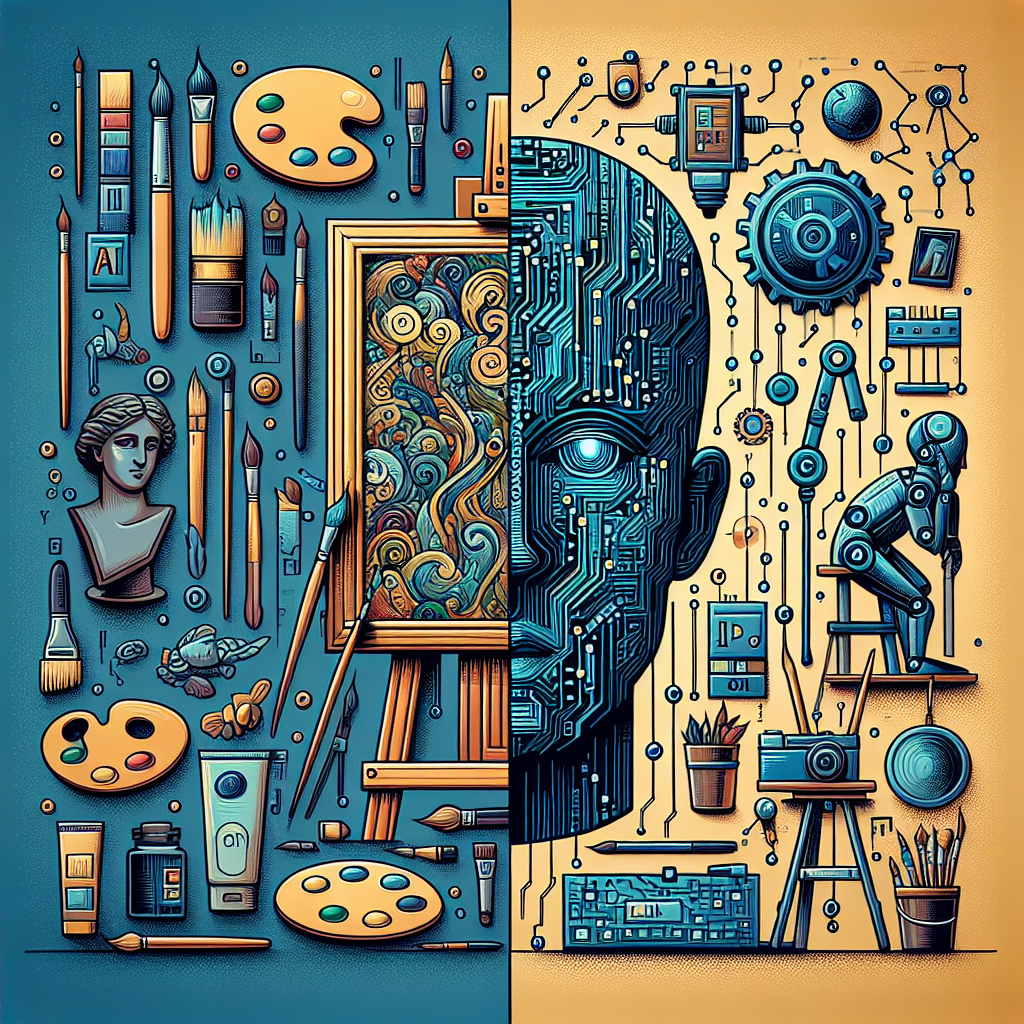Artificial intelligence (AI) has been making its mark in various industries, from healthcare to finance to transportation. But one area where its presence is particularly intriguing is in the intersection of art and technology. Artists and technologists alike are exploring the possibilities of using AI to create new forms of art, blurring the lines between creativity and machine intelligence.
One of the most exciting developments in this field is the use of AI to generate artwork from scratch. Artists and programmers are using algorithms to create unique and innovative pieces of art, ranging from paintings and sculptures to music and poetry. These AI-generated artworks are often unpredictable and surprising, pushing the boundaries of what is considered art.
One example of this is the collaboration between artist Mario Klingemann and Google’s Arts & Culture Lab. Klingemann used a neural network to create a series of portraits, which were then displayed in an exhibition at the Grand Palais in Paris. The portraits were generated by the AI based on a dataset of historical paintings, resulting in a fascinating blend of old and new artistic styles.
Another intriguing use of AI in art is the creation of interactive installations that respond to the viewer in real-time. For example, the artist Refik Anadol used AI algorithms to analyze a series of paintings by famous artists, such as Van Gogh and Monet, and then projected the results onto a large screen. As viewers moved around the room, the AI-generated images shifted and changed, creating a dynamic and immersive experience.
AI is also being used to analyze and interpret existing works of art. For example, the Art Institute of Chicago recently partnered with Microsoft to develop an AI tool that can analyze and interpret the emotions and themes present in paintings. This tool can provide new insights into the artistic process and help viewers better understand and appreciate the artwork.
While AI is undoubtedly changing the landscape of art, it also raises important questions about the role of creativity and human agency in the artistic process. Some critics argue that AI-generated art lacks the emotional depth and subjective experience that is inherent in human-created art. Others see AI as a tool that can enhance and complement human creativity, offering new possibilities for expression and exploration.
Ultimately, the intersection of art and artificial intelligence is a complex and evolving field that is sure to continue pushing the boundaries of what is possible in the world of art. As artists and technologists continue to collaborate and experiment with AI, we can expect to see new and exciting forms of art emerge, challenging our perceptions and expanding our understanding of creativity and innovation.

Leave a Reply
You must be logged in to post a comment.